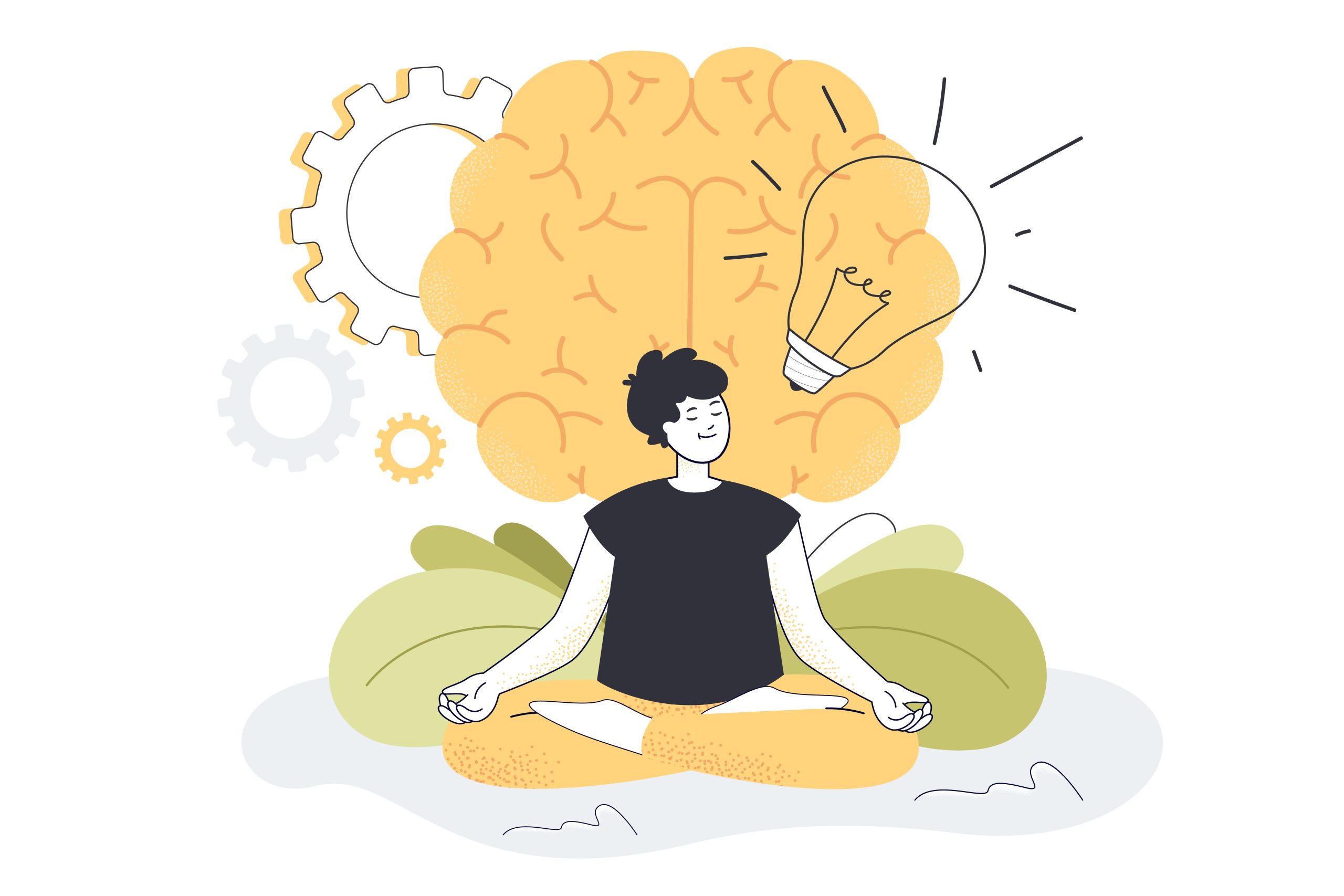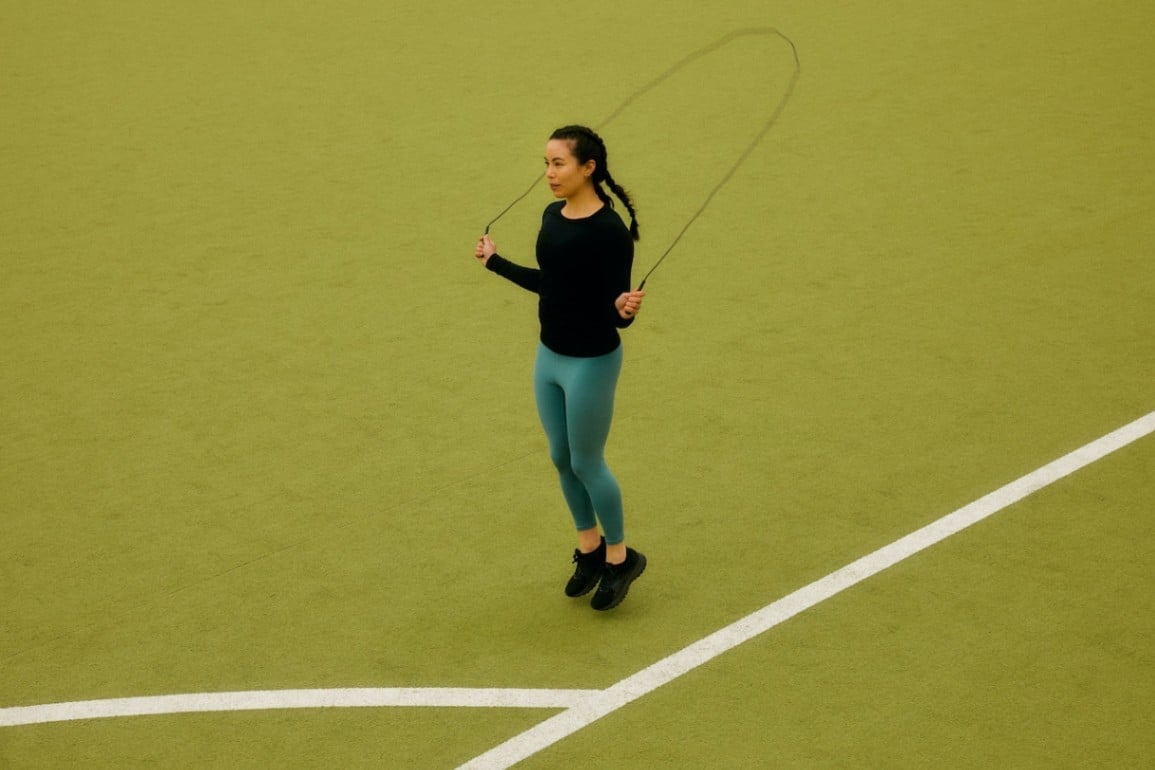Anyone looking to reduce anxiety will find practical strategies here that work without requiring massive life changes or expensive treatments.
The journey to managing anxiety symptoms effectively often begins with understanding what’s happening in the body. When anxiety kicks in, the brain’s alarm system activates, flooding the system with stress hormones and triggering that familiar fight-or-flight response.
But here’s what most anxiety advice gets completely wrong…
The 4-7-8 Breathing Method for Quick Calm
The 4-7-8 breathing technique works like an instant tranquilizer for the nervous system. Developed by Dr. Andrew Weil, this method is remarkably simple: inhale quietly through the nose for 4 seconds, hold the breath for 7 seconds, and exhale completely through the mouth for 8 seconds. This pattern activates the parasympathetic nervous system, shifting the body from “fight-or-flight” to “rest-and-digest” mode.
When anxiety strikes, this technique can lower blood pressure, reduce heart rate, and clear the mind within minutes. The beauty of 4-7-8 breathing is its simplicity—no special equipment or extensive training needed.
Box Breathing: A Technique Used by Navy SEALs
Navy SEALs rely on box breathing during high-stress situations, and for good reason. This technique involves four equal parts: inhale for 4 counts, hold for 4 counts, exhale for 4 counts, and hold again for 4 counts.
Box breathing works by regulating oxygen and carbon dioxide levels in the bloodstream, which calms the autonomic nervous system. During anxiety episodes, visualizing a box while breathing—moving along each side as you complete each step—provides both a mental and physical focus point that interrupts anxious thought patterns.
Diaphragmatic Breathing to Reduce Physical Symptoms
Diaphragmatic breathing (belly breathing) targets the physical manifestations of anxiety by engaging the diaphragm fully. During anxiety, breathing often becomes shallow and chest-centered, which can worsen symptoms like racing heart and dizziness.
To practice correctly:
Place one hand on the chest and another on the abdomen
Breathe in slowly through the nose, feeling the abdomen expand
Exhale through pursed lips while gently contracting abdominal muscles
This technique increases oxygen exchange, lowers stress hormone levels, and reduces muscle tension—all key factors to reduce anxiety and helps in anxiety management.
When and Where to Practice Breathing Exercises
The optimal time to practice breathing techniques is before anxiety reaches peak levels. Regular practice during calm periods builds neural pathways that make these methods more effective during actual anxiety episodes.
Good times to practice include:
First thing in the morning to set a calm tone for the day
Before potentially stressful events like meetings or social gatherings
During commutes or waiting periods
As part of a bedtime routine
Location flexibility is another advantage—these techniques can be performed virtually anywhere: at a desk, in a bathroom stall during a difficult workday, in bed, or even during a challenging conversation (discreetly).
Creating a Breathing Practice Routine
Consistency transforms breathing techniques from occasional tools to powerful anxiety management strategies. A sustainable practice might include:
Starting with just 3-5 minutes twice daily
Setting specific triggers for practice (after brushing teeth, before checking email)
Using a breathing app with reminders and guided sessions
Tracking progress to notice improvements in anxiety levels
Gradually increasing practice duration and incorporating different techniques prevents boredom while building resilience. After about 4-6 weeks of consistent practice, many people report these techniques becoming almost automatic responses to anxiety triggers.
Mindfulness and Meditation Practices
Getting started with mindfulness doesn’t require hours of meditation. These quick 5-minute exercises fit perfectly into even the busiest schedules:
Box Breathing
Inhale for 4 counts
Hold for 4 counts
Exhale for 4 counts
Hold for 4 counts
Repeat for 5 minutes
Mindful Observation
Choose any natural object within sight (flower, cloud, tree) and focus on it for 5 minutes. Notice its colors, patterns, textures, and movements without judgment.
The 5-4-3-2-1 Technique
The 5-4-3-2-1 Technique is a grounding exercise often used to reduce anxiety or overwhelm by bringing your focus to the present moment. Here’s how to do it:
- 5 – See: Look around and identify five things you can see. Notice details like color, shape, and texture.
- 4 – Feel: Acknowledge four things you can feel. This could be the texture of your clothes, the chair beneath you, or the temperature of the air.
- 3 – Hear: Listen for three sounds. This might be distant traffic, the hum of electronics, or your own breathing.
- 2 – Smell: Identify two things you can smell. If nothing is immediately apparent, try to notice subtle scents in the air.
- 1 – Taste: Notice one thing you can taste. This could be the lingering taste of a drink, your saliva, or even the air itself.
This technique helps shift your attention away from distressing thoughts by engaging your five senses, effectively anchoring you to your immediate surroundings. It’s a quick and effective tool for regaining composure.
Physical Activities That Combat Anxiety
Physical activity isn’t just good for the body—it’s a powerful anxiety-buster. When exercising, the brain releases endorphins that act as natural mood elevators. These chemicals create feelings of well-being that can last for hours after a workout ends.
Regular exercise also reduces levels of stress hormones like cortisol and adrenaline, which tend to run high in people with anxiety. Studies show that just 20-30 minutes of moderate exercise can immediately reduce anxiety symptoms.
The routine of exercise provides additional benefits:
Creates structure in daily life
Improves sleep quality
Builds confidence through achievement
Offers distraction from worry cycles
Yoga Poses Specifically Designed for Anxiety Relief
Certain yoga poses target the physical manifestations of anxiety. These positions open the chest, release tension in the shoulders, and ground the body.
Top anxiety-relieving poses:
Child’s Pose – Gently stretches the back while creating a sense of safety
Forward Fold – Calms the nervous system by increasing blood flow to the brain
Legs Up The Wall – Triggers the parasympathetic nervous system for deep relaxation
Cat-Cow Stretch – Releases tension in the spine and coordinates movement with breath
For maximum benefit, hold each pose for 5-10 breaths while focusing on slow, deep breathing.
The Power of Walking in Nature
The combination of gentle movement and natural surroundings creates a powerful antidote to anxiety. Research shows that just 20 minutes of walking in a natural setting significantly lowers stress hormone levels.
This effect, sometimes called “forest bathing,” works through multiple channels:
Natural settings activate the parasympathetic nervous system
Green spaces reduce mental fatigue
The rhythm of walking creates a meditative state
Nature sounds lower blood pressure and heart rate
No elaborate hiking gear needed—simply find a park, trail, or even a tree-lined street for similar benefits.
Low-Impact Exercises for High-Stress Days
Sometimes anxiety makes high-intensity workouts feel impossible. On those days, gentler approaches work best:
Swimming: The water creates gentle resistance while supporting the body. The rhythmic breathing pattern has a meditative quality.
Tai Chi: This ancient practice combines flowing movements with mindfulness. The slow, deliberate motions require focus that interrupts anxious thought patterns.
Stretching routines: Even 10 minutes of gentle stretching releases physical tension that accompanies anxiety.
Dancing: Put on favorite music and move freely—no choreography required. Dancing combines rhythm, movement, and emotional expression.
The key isn’t intensity but consistency. Finding enjoyable physical activities makes them sustainable anxiety management tools.
Cognitive Behavioral Strategies
Anxiety often thrives on distorted thinking patterns. These patterns act like mental traps, keeping people stuck in cycles of worry. Common thought distortions include catastrophizing (assuming the worst possible outcome), black-and-white thinking, and overgeneralizing from single experiences.
Breaking these patterns starts with recognition. When anxious thoughts arise, pause and ask: “Is this thought based on facts or fears?” Evidence-gathering becomes a powerful tool – writing down concrete evidence that either supports or contradicts the anxious thought often reveals its irrational nature.
Creating Realistic Thought Replacements
Once negative thought patterns are identified, the next step involves crafting alternative, more balanced perspectives. This doesn’t mean forced positivity – realistic thinking works better than blind optimism.
For example, replace “I’ll definitely fail this presentation” with “Presentations make me nervous, but I’ve prepared well and can manage even if I make small mistakes.”
Effective replacement thoughts:
Acknowledge feelings without judgment
Focus on what’s within control
Consider multiple possible outcomes
Draw from past successes
The STOP Technique for Anxious Moments
When anxiety strikes suddenly, the STOP technique provides immediate intervention:
S – Stop what you’re doing
T – Take a breath
O – Observe thoughts, feelings, and physical sensations
P – Proceed with intention
This technique creates critical space between triggering events and reactions. Practice makes it increasingly effective during high-stress situations.
Journaling Methods to Process Anxious Thoughts
Journaling externalizes racing thoughts, making them easier to examine objectively. Effective anxiety journaling approaches include:
Worry Time Journaling: Schedule 15-20 minutes daily to write down all worries, then close the journal and move on
Thought Record: Document situations, emotions, automatic thoughts, evidence for/against those thoughts, and alternative perspectives
Gratitude Entries: Counter anxiety’s negativity bias by recording positive experiences, no matter how small
Digital journals work fine, but research suggests handwriting may provide additional cognitive benefits for processing emotions.
Developing Healthy Coping Statements
Coping statements serve as personal mantras during anxious periods. These short, powerful phrases redirect thinking toward resilience. Effective coping statements:
Acknowledge difficulty without catastrophizing: “This is uncomfortable, but not dangerous”
Remind of temporary nature: “These feelings will pass”
Draw on past resilience: “I’ve handled difficult situations before”
Focus on present moment: “Right now, I am safe”
Personalization matters – coping statements should resonate with individual experiences and values. Reviewing and revising these statements regularly helps maintain their effectiveness during challenging periods.
Managing Anxiety Through Practical Methods
The journey to managing anxiety effectively involves a multi-faceted approach. Breathing techniques provide immediate relief during anxious moments, while regular mindfulness and meditation practices build long-term resilience against stress triggers. Physical activities serve as powerful anxiety reducers by releasing tension and promoting positive neurochemical changes. Cognitive behavioral strategies complete this toolkit by helping to identify and reshape anxiety-inducing thought patterns.
Taking action to reduce anxiety doesn’t require radical life changes—start with just one technique from this guide. Consistency matters more than perfection. Remember that seeking professional support is always beneficial when anxiety becomes overwhelming. With these evidence-based methods and regular practice, anxiety can become a manageable part of life rather than a controlling force.







